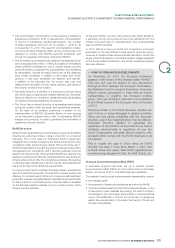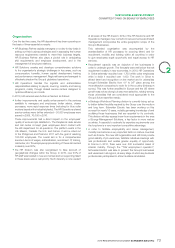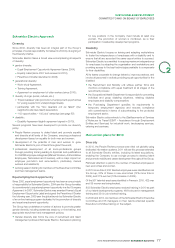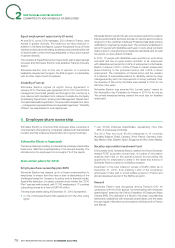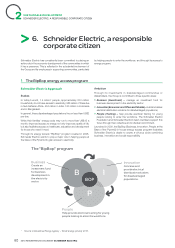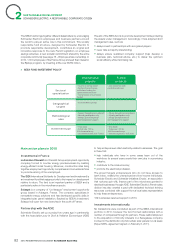APC 2010 Annual Report Download - page 75
Download and view the complete annual report
Please find page 75 of the 2010 APC annual report below. You can navigate through the pages in the report by either clicking on the pages listed below, or by using the keyword search tool below to find specific information within the annual report.
SUSTAINABLE DEVELOPMENT
COMMITTED TO AND ON BEHALF OFEMPLOYEES
Organisation
Over the last two years, the HR department has been operating on
the basis of three essential concepts:
•HR Business Partner assists managers on a day-to-day basis in
setting out their business strategies and in assessing the human
resource requirements needed to meet their business targets.
HR Business Partner also plays a pivotal role in anticipating
skill requirements and employee development, and in the
management of employee relations;
•HR Solutions creates and develops comprehensive solutions
to the organisation’s strategic challenges in key areas, such as
compensation, benefi ts, human capital development, training
and performance management. Regional teams are leveraged to
effectively shadow the Group’s globalised operations;
•HR Operations handles the logistics and administrative
responsibilities relating to payroll, sourcing, mobility and training
programs, mainly through shared service centers designed to
optimise effi ciency and costs.
In 2010, HR services were further enhanced, as follows:
•further improvements and quality enhancement in the services
available to managers and employees: better advice, clearer
processes, more rapid response times (including for blue collar
workers based at the industrial plants). The HR Operations shared
service centers were further extended – 30,000employees were
served in 2009, 70,000 in 2010.
These improvements had a direct impact on the employees’
quality of work and job satisfaction. The PeopleLink desk service
and call center concept gives employees direct contact with
the HR department for all questions. The platform exists in the
US, Mexico, Canada, the U.K. and France. It will be rolled out
to the Philippines and Poland in 2011 with the goal of reaching
100,000 employees. The overall aim is for a comprehensive
service in terms of wages, administration, recruitment, IT, training,
call center, etc. The employee approval rating of these call centers
is already over 80%;
•the HR division was also reorganised to take account of
geographical changes within the Group. In 2010, over 45% of
HR staff was located in new economies and so supporting talent
in these areas was a real priority. Such diversity is now evident
at all levels of the HR division: 50% of the HR Solutions and HR
Operations managers now come from new economies and talent
management incorporates the entire geographic scope of the
Group’s Businesses.
This extended organisation was accompanied by the
standardisation of HR processes for sourcing talent, and for
recruitment, mobility and training within all countries in order
to give employees equal opportunity and equal access to HR
services.
•Recruitment capacity was an objective of the businesses in
order to underpin growth. The forecasts were well below the real
requirement notably in new economies. In 2010, HR Operations
in China externally recruited over 1,700 white collar employees
while in India it recruited over 1,000. The work in China to
attract talent and recognition on the market and in universities
brought Schneider Electric from 41st to 36th place among the
most attractive companies to work for in the country (Universum
survey). This was further amplifi ed in Europe and the US where
growth was not as strong but was more selective, notably among
those universities that are considered most appropriate to the
Group’s future expertise needs;
•a Strategic Workforce Planning division is currently being set up
to better defi ne the skills required by the Group over the medium
and long term. Schneider Electric has been working on this
concept for nearly 10years, notably garnering knowledge of and
codifying those businesses that are essential to its continuity.
This division will also assess know-how requirements in the area
of Energy Management Solutions, a key factor in more mature
countries. A capacity to estimate its expertise requirements over
the long term is a very important competitive advantage;
•in order to facilitate employability and career management,
mobility has become a very important factor in mature countries
such as France. The new HR organisation and HR tools provide
good visibility of job vacancies, facilitate individual meetings with
real professionals and enable greater equality of opportunity.
In France in 2010, there were over 500 successful cases of
internal mobility. Through the “TGV employment operation”,
Schneider Electric was able to present the Group’s businesses
and vacancies in all regions, at every stage of which key business
professionals participated to attract suitable candidates.
2010 REGISTRATION DOCUMENT SCHNEIDER ELECTRIC 73
2








